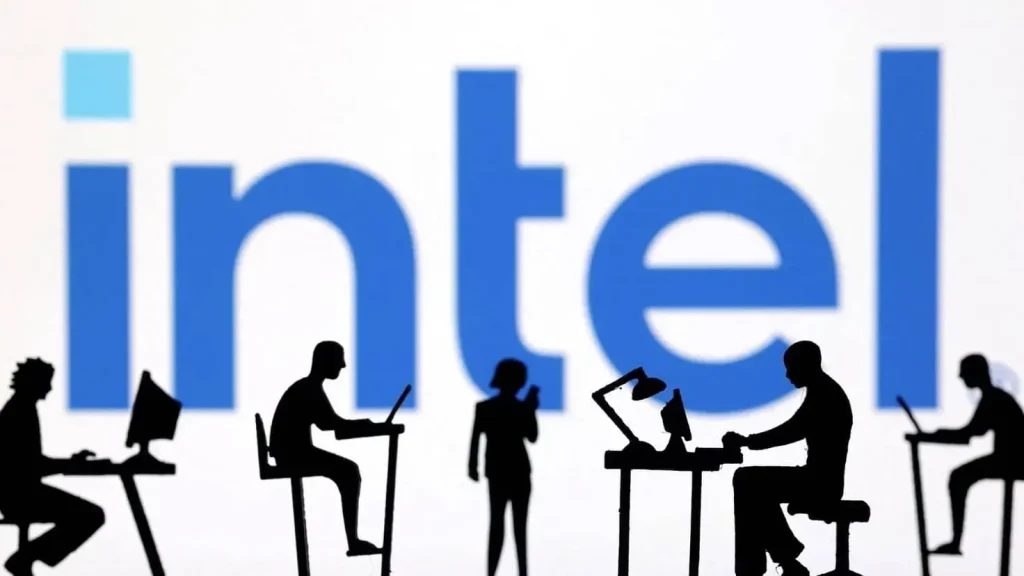Intel layoffs have taken center stage as the tech giant prepares to announce significant workforce reductions, with plans to cut around 20% of its staff, amounting to nearly 21,000 employees. This drastic move comes as part of Intel’s restructuring plan aimed at eliminating bureaucracy and revamping its management structure under the leadership of newly appointed CEO Lip-Bu Tan. The company has been grappling with fluctuating revenues and high operational costs, which has prompted these cost-cutting measures. Following a previous round of layoffs in August 2024 where 15,000 employees were let go, Intel is now executing a broader strategy to improve efficiency and position itself better in the competitive market. As the technology sector faces unprecedented challenges, Intel’s management changes signal a new direction aimed at restoring profitability and innovation.
Recent reports indicate significant changes at Intel, as the company moves towards a more streamlined operation following a challenging period. The impending workforce reduction, with thousands of employees potentially affected, signifies a profound restructuring initiative intended to realign the organization’s focus and drive efficiency. This shift, led by new leadership, highlights the necessary adaptations within the tech industry amidst evolving market demands. The focus on cutting costs comes in response to past performance issues, with Intel attempting to recover from financial setbacks while embracing new management strategies. By addressing its workforce and optimizing its operational framework, Intel aims to foster a more agile environment conducive to future growth.
Understanding the Impact of Intel Layoffs on Employees
The recent reports about Intel layoffs have stirred concern among employees and industry analysts alike. A projected cut of 21,000 jobs, representing roughly 20% of Intel’s workforce, signifies a significant shift that could have dire implications for those who depend on this tech giant for their livelihoods. The emotional toll of such layoffs is profound, as many employees face uncertainty about their future and the stability of their positions.
Moreover, layoffs can have a ripple effect on workplace morale and productivity. Remaining employees may experience heightened anxiety about job security, leading to decreased engagement and performance. Consequently, Intel’s decision to undertake such drastic measures must consider not only the immediate financial benefits but also the long-term effects on its organizational culture and employee trust.
Intel’s Restructuring Plan and Cost-Cutting Measures
Intel’s decision to implement a restructuring plan is primarily driven by the need to align operational costs with its business model. With new CEO Lip-Bu Tan at the helm, the stated goals of the cost-cutting measures include eliminating bureaucratic inefficiencies and fostering an engineering-centric culture. This restructuring is not just a reaction to external pressures; rather, it represents a strategic pivot aimed at reinvigorating Intel’s competitive edge in a rapidly evolving tech landscape.
In light of the ongoing challenges in the semiconductor industry, these cost-cutting efforts are crucial for Intel’s sustainability. The previous layoffs of 15,000 employees in August 2024, as part of a broader $10 billion cost restructuring plan, showcase the company’s commitment to reducing expenses while adapting to market dynamics. By embracing a leaner operational model, Intel aims to enhance its ability to invest in emerging technologies, particularly artificial intelligence, which has become a pivotal area of focus.
Changes in Intel Management and Leadership Strategies
The management changes at Intel, particularly the transition from Pat Gelsinger to Lip-Bu Tan, mark a pivotal moment for the company. Under Gelsinger’s leadership, significant decisions were made regarding layoffs and restructuring, reflecting a period of intense transformation. Tan’s new approach is expected to address these changes while also recalibrating the company towards a more agile and responsive structure.
With new management often comes new strategies, and Tan’s vision for Intel emphasizes the need to streamline processes while fostering an environment that encourages innovation. As Intel navigates through these turbulent waters, the effectiveness of its leadership and management strategies will play a critical role in ensuring that the company remains resilient and capable of adapting to the challenges of a competitive market.
The Future of Intel: What Comes After the Layoffs?
As Intel prepares for potential layoffs and management changes, the question on everyone’s mind is: what does the future hold for the company? Analysts suggest that this wave of layoffs could be a necessary step toward revitalizing the business structure. By shedding excess workforce and reallocating resources, Intel may be laying the groundwork for future growth, particularly in sectors where they have historically lagged.
However, the success of these measures will largely depend on how Intel reinvests in its remaining workforce and technology initiatives. By focusing on innovation and emerging markets, such as AI and advanced manufacturing, Intel can position itself not just to recover, but to thrive in the next decade. The strategic decisions made today will ultimately shape the trajectory of the company, determining whether this period of layoffs will lead to a revitalized Intel or merely a reactive response to market pressures.
Analyzing Market Trends and Intel’s Position
Market trends in the semiconductor industry have significant implications for Intel’s operational strategies. The rise of AI and machine learning presents both challenges and opportunities for tech companies. For Intel, keeping pace with competitors while reducing costs through layoffs is an essential tactic. Competitive pressures from firms like AMD and NVIDIA necessitate a clear focus on innovation in products and processes.
Understanding these market dynamics is crucial for Intel’s long-term success. The company must navigate these pressures while maintaining its strategic vision. By aligning its workforce reduction plans with a clear understanding of market demand, Intel can better position itself to capitalize on emerging trends, ensuring that it not only survives but thrives in an increasingly competitive landscape.
The Role of AI in Intel’s Growth Strategy
AI has emerged as a critical component in the tech industry’s landscape, and Intel is strategically looking to leverage this trend to drive growth. Despite setbacks, such as the cost structuring and workforce reductions, the company’s leadership recognizes the potential of AI technologies to reshape its future. By focusing on development in AI, Intel aims to enhance its product offerings and regain competitive advantage.
Through investment in AI, Intel hopes to not only recover lost ground but also redefine its identity in the tech marketplace. Building products that cater to AI-driven applications and using AI internally for process optimization could lead to significant advancements. The challenge remains for Intel to balance immediate restructuring with long-term investments in technology that will pay dividends in the future.
Implications of Intel’s Layoffs for the Technology Sector
Intel’s layoffs hold broader implications for the technology sector as a whole. As one of the leading semiconductor manufacturers, actions taken by Intel can influence market trends, affecting other companies within the industry. As the tech world closely monitors Intel’s moves, the ramifications may lead many companies to reevaluate their own workforce and operational strategies.
The decision to cut jobs and restructure can create a ripple effect that encourages other firms to adopt similar measures, particularly during challenging economic times. It underscores the need for agility and adaptability within the technology sector, an industry that is constantly evolving. Therefore, Intel’s decisions will likely serve as a benchmark for how other organizations navigate through their workforce management and restructuring in response to market demands.
Employee Sentiment and Company Culture Post-Layoffs
The sentiment among employees following Intel’s layoff announcements will be critical in shaping the company’s culture moving forward. Following a significant reduction in workforce, remaining employees may experience a sense of insecurity and mistrust, questioning the future of their roles within the organization. It is essential for Intel’s management to address these concerns proactively to prevent further decline in morale.
Rebuilding trust and fostering a positive corporate culture will take time and intentional effort from leadership. Initiatives aimed at employee engagement and open communication can help to mitigate uncertainties following layoffs. Ultimately, the health of Intel’s company culture will play a vital role in its ability to innovate and adapt, making it imperative that management places priority on rebuilding this aspect of the organization.
Strategic Recommendations for Intel’s Recovery
To facilitate an effective recovery and reposition Intel as a leader in the tech industry, several strategic recommendations can be considered. Firstly, Intel should enhance its investment in research and development, particularly in fields such as AI and quantum computing. By doing so, it can stimulate innovation and create new revenue streams that could help offset costs related to layoffs and restructuring.
Additionally, Intel should prioritize employee well-being post-layoffs. Implementing comprehensive support programs for affected employees, as well as clear communication strategies for those remaining, can foster a more resilient workforce. Aligning these efforts with the broader corporate objectives of innovation and efficiency will ensure that Intel is not just recovering but is also paving the way for sustained growth and industry leadership.
Frequently Asked Questions
What are the details of Intel’s latest layoffs in 2024?
Intel is reportedly set to cut approximately 21,000 employees in a bid to restructure its workforce, which accounts for nearly 20% of its total staff. This decision is part of a larger strategy initiated by the new CEO, Lip-Bu Tan, aimed at reducing bureaucracy and promoting a more efficient engineering-driven culture.
How does the Intel restructuring plan affect employee morale?
The Intel restructuring plan, which includes significant layoffs, could impact employee morale negatively as uncertainty about job security increases. However, the company aims to streamline operations and may create a more focused environment that benefits the remaining workforce in the long run.
What led to Intel’s decision for workforce reduction?
Intel’s decision for workforce reduction stems from the need to align its cost structure with its new operating model, following disappointing revenue growth. The company aims to reduce high operational costs to better capitalize on market opportunities, including advancements in AI and technology.
What was the previous cost-cutting strategy before the 2024 layoffs?
Prior to the 2024 layoffs, Intel implemented a $10 billion cost-cutting strategy that involved laying off 15,000 employees in August 2024. This was part of former CEO Pat Gelsinger’s efforts to restructure the company amidst financial challenges.
Who is leading the changes at Intel after the recent management changes?
The management changes at Intel are now led by CEO Lip-Bu Tan, who succeeded interim CEOs David Zinsner and Michelle Johnston Holthaus. Tan’s leadership marks a new phase for Intel as it navigates its restructuring plan and upcoming layoffs.
What future layoffs can we expect from Intel amid ongoing restructuring?
While specific details about future layoffs beyond the current 2024 cuts are not confirmed, Intel’s ongoing restructuring indicates that further workforce adjustments may be necessary as the company continues to realign its operations and cost structure.
How do the Intel layoffs impact the semiconductor industry?
Intel’s layoffs could signal broader challenges within the semiconductor industry, as major companies adapt to changing market conditions and financial pressures. It may prompt competitors to reevaluate their workforce and strategies to maintain competitiveness.
| Key Points |
|---|
| Intel plans to lay off around 21,000 employees, approximately 20% of its workforce. |
| This decision is part of a restructuring plan to reduce bureaucracy and streamline management. |
| New CEO Lip-Bu Tan will oversee these layoffs, having taken over recently. |
| Former CEO Pat Gelsinger initiated previous layoffs of 15,000 employees in August 2024 as part of a $10 billion restructuring plan. |
| Gelsinger cited the need to align operational costs with revenue expectations and capitalize on trends like AI. |
Summary
The Intel layoffs mark a significant moment in the company’s history as it tries to navigate through challenging financial conditions. With plans to cut 20% of its workforce, Intel is addressing its operational inefficiencies and restructuring under the leadership of new CEO Lip-Bu Tan. This move follows a previous layoff under former CEO Pat Gelsinger, as the company strives to adapt to evolving market demands and enhance its competitive edge.



